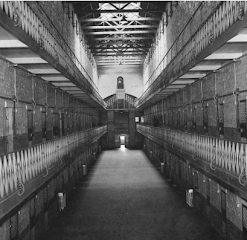Prisons are a strange place for people to meet. In the 1960's Nelson Mandela met a Bengali man in prison who interestingly went to East Berlin under a false name, learning espionage at the peak of the Cold War, but who was this man?
Circa 1961, the world was clearly divided, and the Cold War was at its peak. In the middle of that chaotic war between pre-war morality and modern ethics, a young man called Das Gupta entered East Germany hoping to learn new printing techniques.
One fine morning, Das Gupta woke up to find the world divided. A Wall had been erected right across Berlin separating West and East Berlin, which had already been under separate control for a while.
Das Gupta had purportedly gone there as a student to learn printing techniques, which he planned to apply back home. However, that was only one thing he was learning; Das Gupta was different from who he seemed.
With the two superpowers staring into each other's cold hearts and bluffing about their power, it was an excellent opportunity for people like Das Gupta to leverage things for their own benefit as he learned ways of sabotage and espionage in East Berlin.
A fake identity was given to him by his contacts in East Germany; his actual name was Sathyandranath Ragunanan Maharaj. Although he was of Indian origin, he and his family had spent most of their lives in South Africa.
Better known as Mac, he was born to an Indian family in Newcastle, Natal. His grandfather had come from India to work in the sugarcane fields. Having spent his initial years with his father, with whom he didn't always see eye to eye, he went to Durban for further studies.
In Durban, left-wing ideals strongly influenced Mac while studying at the University of Natal. Mac's ideals of struggle were shaped by the conflicts around the world at the time. Hence he felt strongly against the Non-violent methods propagated by the African National Congress.
In the following years, Mac went to London to study law and then sneaked to East Berlin to learn how to use Dynamite. Around 1962 Mac returned to South Africa and immediately became involved in the underground movement for the South African Communist Party.
Mac worked as a printer in the underground movement, publishing propaganda and all kinds of seditious templates for the movement. The same year, Nelson Mandela was sentenced to leave the country and gave his famous speech from the dock.
Mac and his associates spent days printing and distributing that speech, and it caused quite a stir. Later they would make bombs and target railway lines, and for a while, the propaganda team could make enough noise that ultimately reached the ears of authority.
In July 1964, Mac was arrested in Johannesburg along with a few of his associates. While in detention, Mac was brutally tortured by his torturer Lieutenant Theunis Swanepoel, a Russian who the Africans nicknamed the 'Rooi Rus' or the Red Russian.
Mac was sentenced to Robben Island prison, where he became a close confidant of Mandela and Walter Sisulu. It is believed that Mac could ferry out parts of Mandela's memoir from prison which he transcribed.
After his release, Mac continued being part of the underground movement. When the apartheid regime was finally accepted defeat in 1994, Mac became the Transport Minister. He remained an influential figure in South African politics for many years to come.
Mac's short time in London opened his eyes to the hypocrisy of the West. On the one hand, they preached morality, rights, and freedom; on the other hand, they had let the apartheid government in South Africa continue for so many years with absolute impunity.
This was the final straw that led him to the path of revolution for the rest of his life.
Sources: Shades of Difference: Mac Maharaj and the Struggle for South by Padraig O'Malley (Penguin Books)
South African History Online




